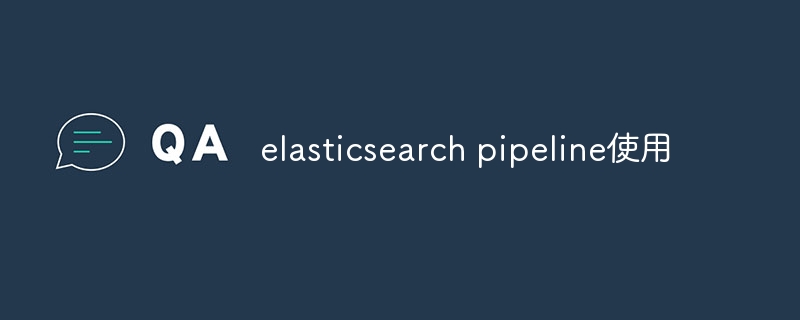This article discusses the use of Elasticsearch pipelines to simplify data processing and analytics tasks. Pipelines allow users to define a series of transformations and actions that are applied to data as it is ingested into Elasticsearch, streamli

How can I leverage Elasticsearch pipelines to simplify data processing and analytics?
Elasticsearch pipelines are a powerful tool for simplifying data processing and analytics tasks. Pipelines allow you to define a series of transformations and actions that are applied to data as it is ingested into Elasticsearch. This can streamline your data processing workflow and reduce the amount of time and effort required to prepare data for analysis.
Pipelines can be used for a wide variety of tasks, including:
- Data cleaning and normalization
- Data enrichment
- Feature extraction
- Anomaly detection
- Machine learning
By using pipelines, you can improve the quality and consistency of your data, making it easier to perform accurate and insightful analysis.
What are the best practices for designing and implementing efficient Elasticsearch pipelines?
When designing and implementing Elasticsearch pipelines, it is important to follow a few best practices to ensure efficiency and performance.
-
Identify the purpose of the pipeline. Before creating a pipeline, it is important to understand what you want to achieve with it. This will help you to determine the appropriate transformations and actions to include in the pipeline.
-
Use the correct processors. Elasticsearch offers a wide range of processors that can be used to transform and manipulate data. Choose the processors that are most appropriate for your specific task.
-
Test your pipeline. Before deploying a pipeline, it is important to test it thoroughly to ensure that it is working correctly. You can use the Elasticsearch testing framework to test your pipelines.
-
Monitor your pipeline. Once your pipeline is deployed, it is important to monitor it to ensure that it is performing as expected. You can use the Elasticsearch monitoring framework to monitor your pipelines.
How can I monitor and troubleshoot Elasticsearch pipelines to ensure optimal performance?
To ensure optimal performance, it is important to monitor your Elasticsearch pipelines regularly. You can use the Elasticsearch monitoring framework to track the following metrics:
-
Pipeline latency. This metric measures the amount of time it takes for data to flow through the pipeline.
-
Pipeline throughput. This metric measures the amount of data that flows through the pipeline per second.
-
Pipeline errors. This metric tracks the number of errors that occur during pipeline execution.
If you notice any performance issues with your pipeline, you can use the Elasticsearch troubleshooting framework to identify and resolve the problem. Common problems include:
-
Slow pipeline latency. This can be caused by a number of factors, including:
- Slow processors
- Too many processors in the pipeline
- Insufficient resources on the Elasticsearch cluster
-
Low pipeline throughput. This can be caused by:
- Slow processors
- Too many processors in the pipeline
- Insufficient resources on the Elasticsearch cluster
- Backpressure from downstream components
-
Pipeline errors. This can be caused by:
- Invalid processor configurations
- Corrupt data
- Insufficient resources on the Elasticsearch cluster
By following the best practices outlined above, you can design and implement efficient Elasticsearch pipelines that will help you to simplify data processing and analytics tasks.
The above is the detailed content of elasticsearch pipeline使用. For more information, please follow other related articles on the PHP Chinese website!






